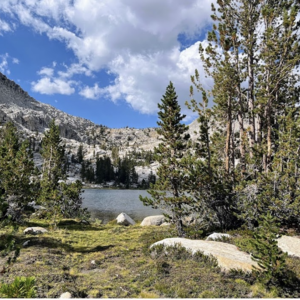The Hayduke Trail is a remote, rugged and challenging 800 mile backcountry route across Southern Utah and Northern Arizona. The route leads through varied terrain from Arches to Zion. You’ll pass through all five of Utah’s national parks, as well as the Grand Canyon. The Hayduke Trail is only for experienced backpackers. Those lacking in desert hiking experience may quickly find themselves in trouble as the off trail navigation, lack of water, long food carries, general remoteness and harsh weather can pose a daunting challenge. Anyone planning a section or thru hike of the Hayduke Trail should complete adequate research beforehand and consider purchasing the official guidebook and Skurka bundle. The brief description that follows provides an overview, but is not to be solely relied upon to successfully navigate the trail.
The Baker Route & Stevens Canyon Alternate is commonly used by Haydukers to bypass the section of trail that follows the Escalante River for nearly 30 miles and features extremely difficult and slow hiking. In addition to easier hiking, the Baker/Stevens route also offers spectacular scenery, making it a great choice.
You’ll begin the alternate by continuing down Halls Creek instead of hiking up Red Slide. Keep following Halls Creek until you reach the Halls Creek Narrows. There should be water flowing from this point onward.
Work your way through the scenic narrows, which feature one short section that may require you to lift your backpack above your head to keep it dry. You’ll then keep following Halls Creek downstream until it is time to begin the Baker Route.
The Baker Route will take you up and over the Waterpocket Fold. You’ll be hiking across slickrock with occasional cairns marking the way. As you continue the route becomes more obvious with even some visible trail in areas.
After topping out the route drops into a wash, then exits to the right (north side) and around a side drainage to bypass a dryfall. After finding your way around this “switchback bypass” and back down into the wash (now known as Exit Canyon) you’ll continue down until you reach another dryfall. From here you’ll rimwalk the left (south) side of the canyon all the way until dropping into Stevens Canyon.
Continue down Stevens Canyon, past the “Triple Junction” until coming to another impassible dryfall. Climb up and rimwalk the left (south) side. You’ll continue walking the Kayenta ledges on the southern rim for quite a while, passing some spots with significant exposure, but a decent enough path to make it feel somewhat comfortable.
Continue until reaching the slickrock ramp that leads down to an easy scramble back into the canyon. Follow the canyon bottom, making one last bypass up and down at Poison Ivy Hill.
The last bit of Stevens is spectacular with an amazing large alcove amongst the highlights. You’ll also see Stevens Arch as you near the end.
The alternate route ends when you reach the Escalante River. You’ll still have to follow the river for a mile until Coyote Gulch, but afterward I’m sure you’ll appreciate that you didn’t have to endure 30 miles of it!

















Comments
Sign In and share them.